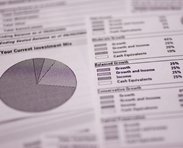 While April 15 marked the end of the tax season, organizations with employee benefit plans now are plunging into the next busy season. Sponsors of large plans (those with 100 or more plan participants) are required to undergo an annual audit of their plan's financial statements.
While April 15 marked the end of the tax season, organizations with employee benefit plans now are plunging into the next busy season. Sponsors of large plans (those with 100 or more plan participants) are required to undergo an annual audit of their plan's financial statements.
The process begins with selecting the appropriate auditor. The Department of Labor (DOL) is currently targeting firms that do not perform a lot of plan audits (less than 25) because this group has had the highest rate of deficient audits. It matters for the employer because sanctions, including rejection of the Form 5500 filing, are applied to the plan sponsor.
Here are some best practices to help you successfully navigate the upcoming benefit plan season.
Communication
Your lead auditor should have already contacted you to discuss the timing of the audit, items that will be required, and whether there are plan amendments that may impact the audit approach. Proper planning is essential for a smooth audit and should include an initial planning call or meeting with the auditor, your personnel, and any service providers to coordinate what information is needed and when it will be available. The discussion should also include a detailed review of the request list with agreed upon due dates and a proposed audit timeline. Audit requests should be explained so you are aware of their purpose and can determine the best type of supporting evidence that may be available.
Organization
The plan administrator should maintain a folder that houses the plan document, adoption agreement (if it is a prototype plan), all plan amendments, summary plan description (SPD), IRS determination letter, and any communications with the IRS or DOL. Some record keepers provide this service online through a database or SharePoint. The SPD should be compared to the plan document to ensure the plan provisions are consistent. Formal minutes should be maintained for all benefit plan committee meetings and should document issues discussed and decisions made to comply with fiduciary responsibilities.
Self Audit Procedures
There are a few simple tasks that each plan administrator can perform in-house to help identify potential errors in advance of the audit. Pay codes should be reviewed at least annually to ensure they are properly included or excluded from eligible wages for participant deferral purposes, with special attention to new pay codes and those codes that are used less frequently. Participant deferrals and employer matching contributions should be spot checked for accuracy on a quarterly basis by recalculating the participant's contribution based on their deferral election and eligible plan wages.
Staying organized and planning properly for your benefit plan audit will lead to minimal interruptions and should result in a painless audit. If you are experiencing persistent issues related to a lack of communication or knowledge of audit procedures, or your daily routines are dramatically interrupted leading to constant delays, it may be time to change your auditor.
Roman Leshak, Jr. can be reached at Email or 215.441.4600.

